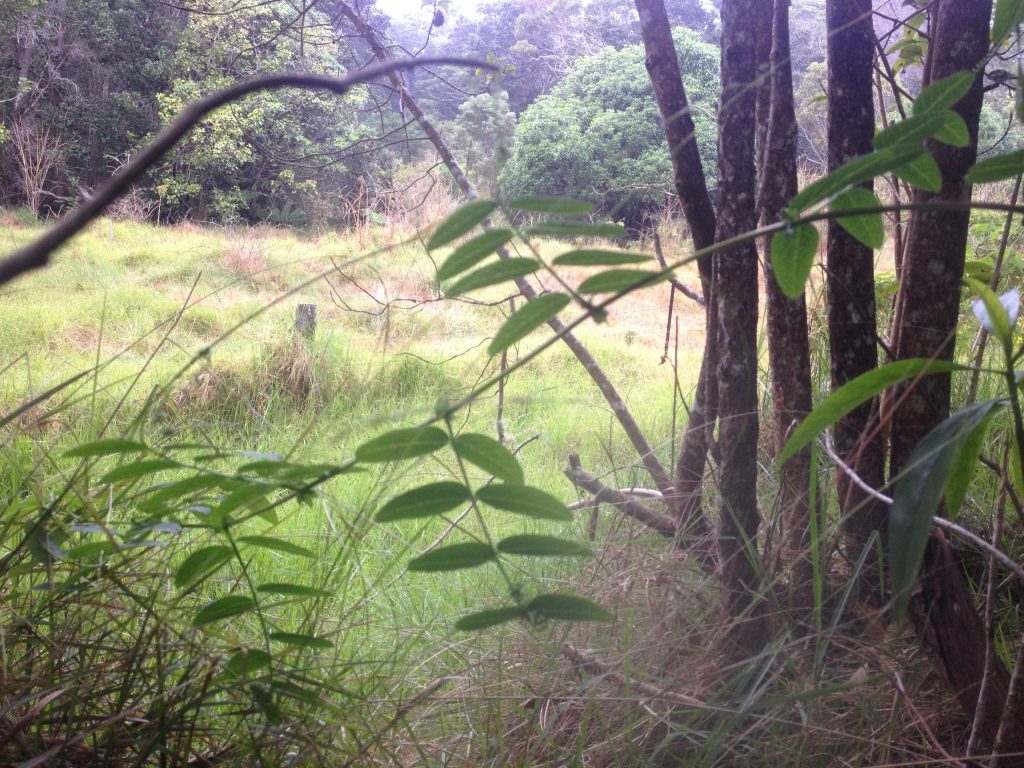Hawaiian vetch
Names
- ʻŌlelo Hawaiʻi: n/a
- Common: Hawaiian vetch
- Scientific: Vicia menziesii
Conservation Status
- Federal and State Listed as Endangered
- Plant Extinction Prevention Program Target’
- Hawai‘i Natural Heritage Ranking – Critically Imperiled (G1)
- Endemism – Island of Hawai‘i
- Critical Habitat – Designated
Species Information
Hawaiian vetch is a vine that grows on the eastern slopes of Mauna Loa and Mauna Kea on the Island of Hawai‘i. Its extensive branching system typically climbs into the subcanopy of the forest and can reach lengths of up to 60 feet. Each vine is known to produce more than 200 pinkish‐rose flowers that gracefully hang from a thin, green stalk. Hawaiian vetch is severely threatened by land development and aggressive exotic plants. It was the first Hawaiian plant to be listed as an endangered species.
Distribution
Keauhou‐Kilauea and Pu‘uwa‘awa‘a, on the island of Hawai‘i.
Habitat
The Keauhou‐Kilauea population occurs in wet to mesic forest, approximately 1,570 to 1,720 meters elevation. The Pu‘uwa‘awa‘a population occurs in open, mesic forest with a fern understory, at approximately 1,600 meters elevation.
Threats
- Habitat degradation by feral pigs
- Predation by rats
- Competition from alien plant species
- Stochastic extinction
- Reduced reproductive vigor due to the small number of remaining individuals.
Plans & Projects
Puʻu Waʻawaʻa Forest Bird Sanctuary
References & Additional Resources
For more information and references visit the State Wildlife Action Plan factsheets. DOFAWʻs species pages and State Wildlife Action Plan fact sheets are provided for general information and are not meant to be a citable, original source of data. If you are a student, researcher, or writer looking for a citable source, please explore the references below or find other original data sources, rather than citing these webpages. The references below were provided by the authors of the State Wildlife Action Plan fact sheets at the time of drafting:
Hawai‘i Natural Heritage Program. 2005. Hawaii Natural Heritage Program Search, https://www.hinhp.org.
International Union for Conservation of Nature and Natural Resources, 2004, IUCN Red List of Threatened Species: Data Base Search, https://www.redlist.org/search/search‐basic.html.
US Fish and Wildlife Service. 1978. Final Listing, Endangered ETWP; Final Determination that Eleven Plant Taxa are Endangered and Two Plant Taxa are Threatened Species; Federal Register, Vol. 56 No. 183, (26‐APR‐78), 43 FR 17910 179??, 9 pp.
Wagner, W. L., D. R. Herbst, and D. H. Lorence. 2005. Flora of the Hawaiian Islands website. https://ravenel.si.edu/botany/pacificislandbiodiversity/hawaiianflora/index.htm [August, 2005].
Wagner, W.L., Herbst, D.R., and Sohmer, S.H., 1999. Manual of the Flowering Plants of Hawaiʹi‐‐ Revised Edition. Honolulu, HI: University of Hawaii Press and Bishop Museum Press. 1853p.

